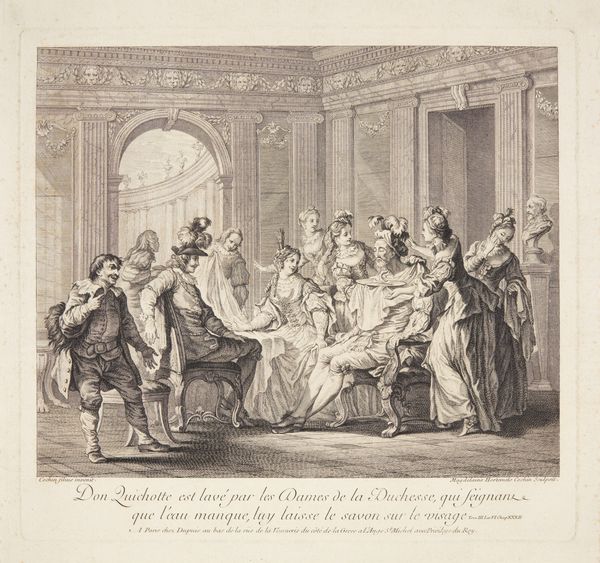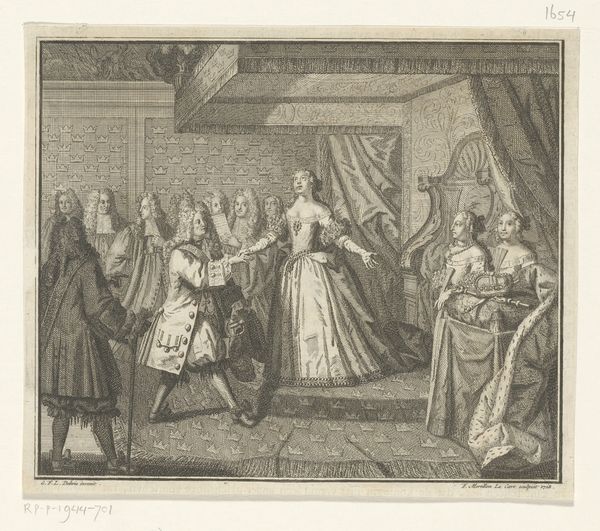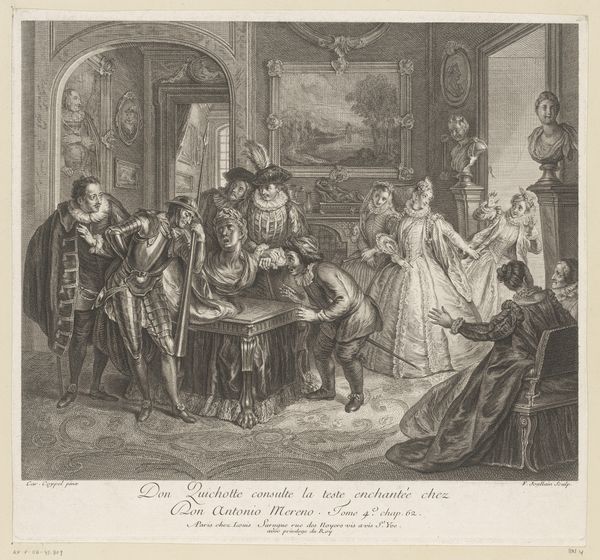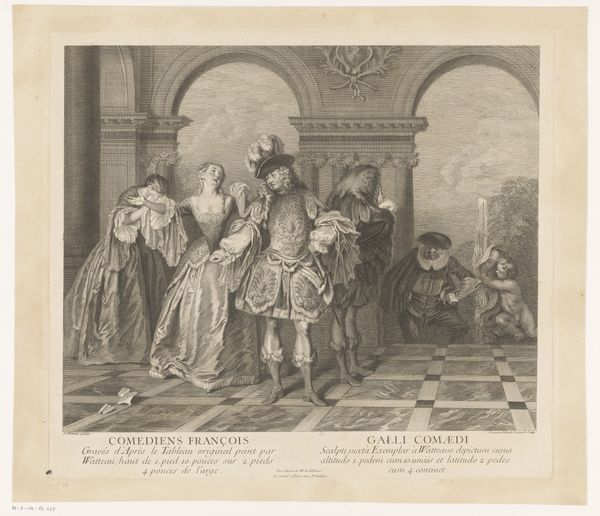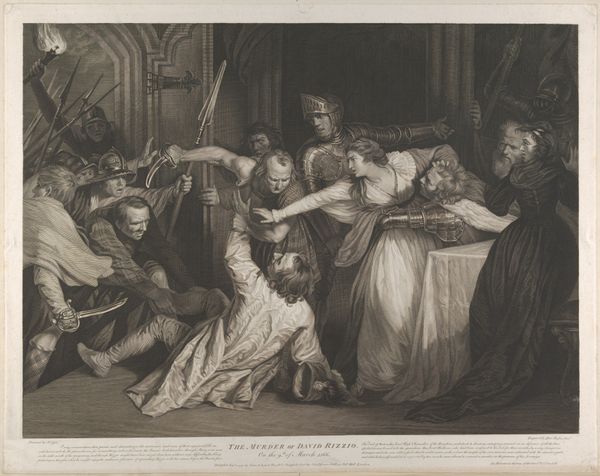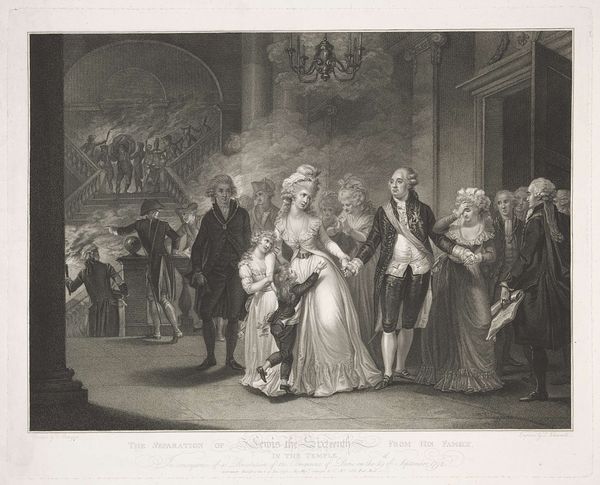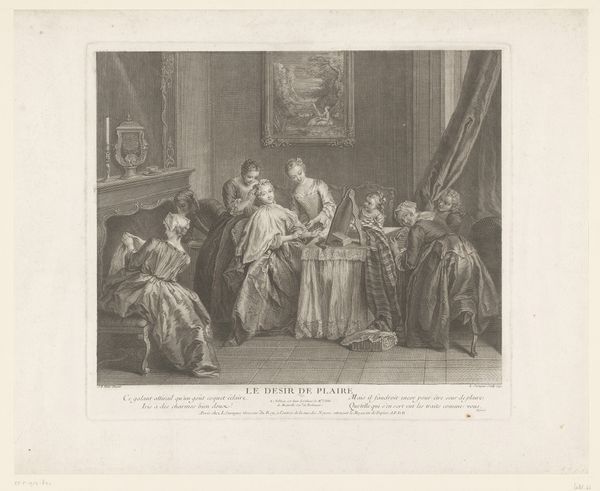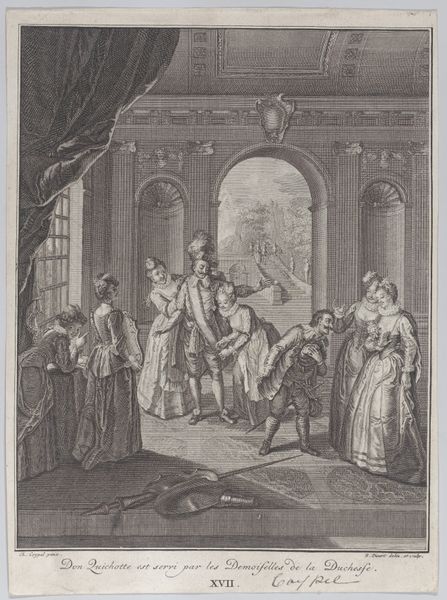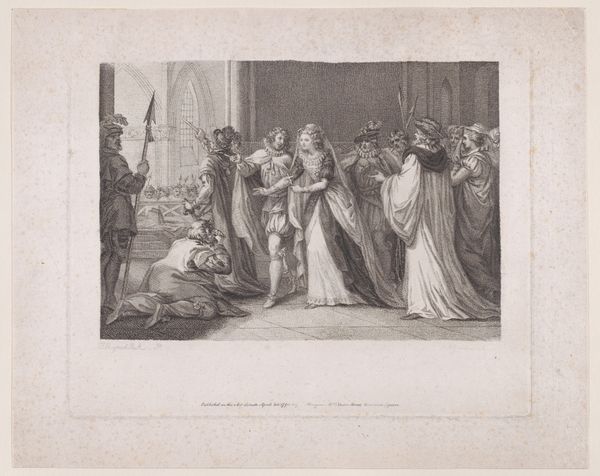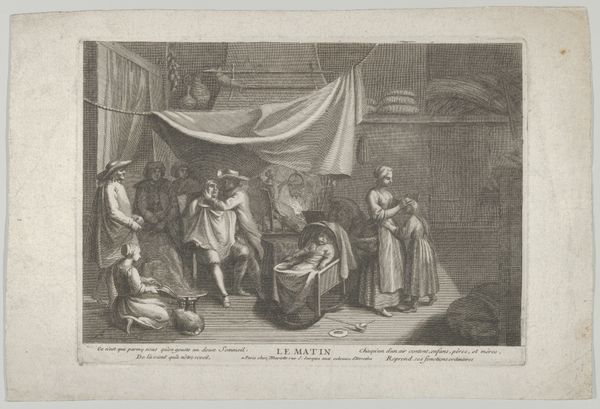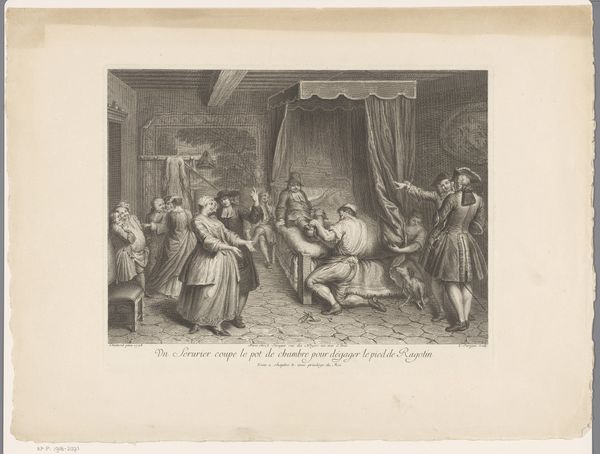
engraving
#
baroque
#
old engraving style
#
figuration
#
archive photography
#
historical photography
#
line
#
genre-painting
#
history-painting
#
engraving
Dimensions: height 323 mm, width 344 mm
Copyright: Rijks Museum: Open Domain
Editor: This is "Don Quichot wordt bediend door de hofdames van de hertogin," an engraving by Louis Surugue made in 1724, now at the Rijksmuseum. The scene has a theatrical feel, like a play being performed. It looks as though Don Quixote is being pranked. How does the history of satire and the setting it is in affect this print's reading? Curator: It’s interesting that you see it as theatrical, and in a way, you're right. Consider the social function of prints like this in the 18th century. This image is from an era obsessed with elaborate courtly rituals and also one where the printed image was exploding across the world. A satire on Don Quixote, set in what looks like a duke’s court – can you see the stage set-like backdrop of an arched opening onto the gardens? – places the figure of Don Quixote both inside and outside of society, at the margins, the subject of ridicule. This becomes an exploration of societal power structures, doesn’t it? The print functions almost as social commentary on the perceived follies of the aristocracy even. Editor: That's fascinating, I hadn't thought about the print itself participating in the same kind of social commentary it depicts. Curator: And where would you expect to find this print displayed? A gallery, as we see it now? Or perhaps within the book itself that tells the tale of Don Quixote. It has the effect of disseminating, in visual shorthand, the perceived follies and oddness of its central protagonist, creating something like a feedback loop. Do you think this contributes to reinforcing social norms and power dynamics? Editor: I think so, yes. Seeing it framed like that gives me a better grasp of not just what it represents, but how it actively engaged with the social climate. Curator: Precisely. And that helps us understand the artwork’s lasting impact and relevance today. Editor: I will remember that the image is not always as it appears, especially considering its intended distribution and engagement. Thanks!
Comments
No comments
Be the first to comment and join the conversation on the ultimate creative platform.
